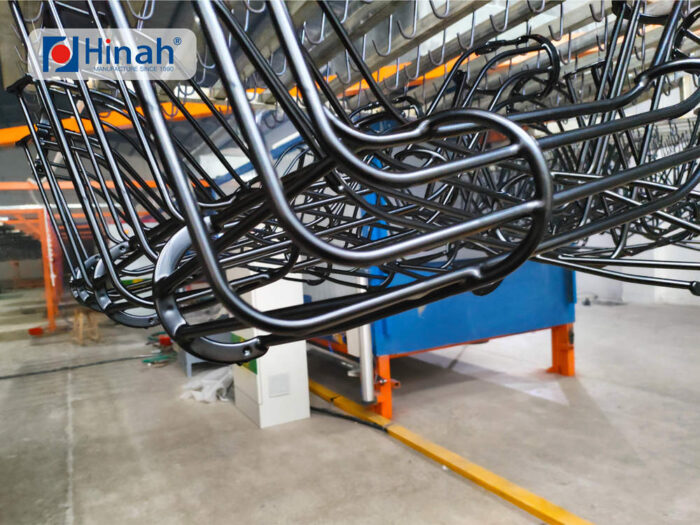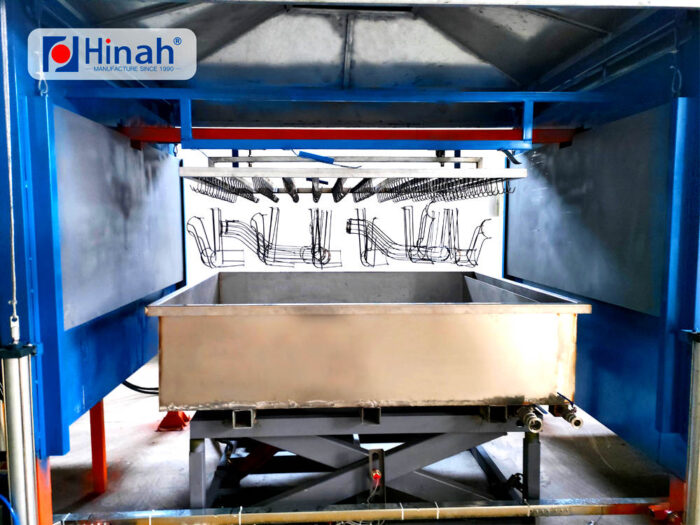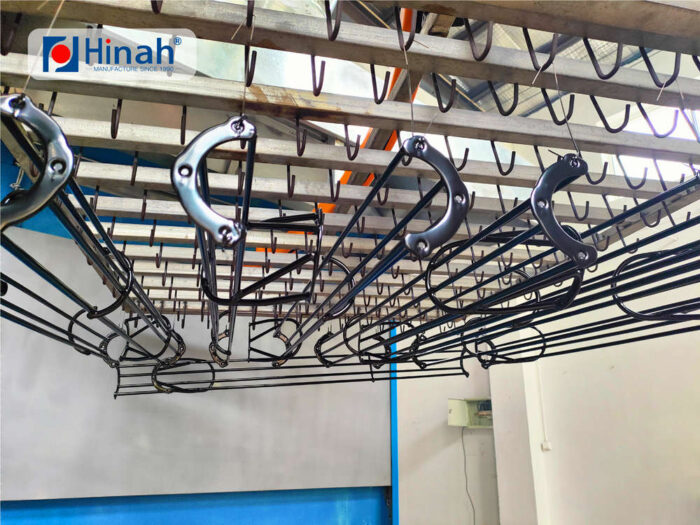How to control the thickness of the coating in powder dip tank coating line
Powder dip tank coating line is a kind of coating process which is widely used in modern industrial production. It can be widely used in many fields, such as automobile, construction, machinery, etc.
It has the advantages of uniform coating, strong adhesion, good wear resistance, etc.
However, the thickness control of powder coating is one of the difficulties that must be solved in the production process.
This article will introduce how to control the thickness of the coating in powder dip tank coating production line.

I. Principle
Powder dip tank coating production line is a coating process in which the workpiece is immersed in the coating powder to make it react with the coating powder electrostatically and then cured by high temperature oven.
The principle of this process is to use the principle of electrostatic adsorption to electrify the powder coating and adsorb it to the surface of the workpiece with the opposite charge through the electric field effect. The powder coating is then cured in a high temperature oven to form a solid coating.
This coating process does not need solvents and has the advantages of environmental protection and safety.

II. The control method of coating thickness of powder dip tank coating line
1. Granularity of coating powder
The granularity of coating powder is one of the important factors affecting the thickness of the coating. Generally speaking, the finer the granularity of the powder, the thinner the coating thickness. Therefore, in the production, the powder granularity suitable for the workpiece should be selected to achieve the purpose of controlling the thickness of the coating.
2. Dipping time
Dip time is another factor to control the coating thickness. If the dipping tank time is too long, the coating thickness will be too thick; if the dipping tank time is too short, the coating thickness will be insufficient. Therefore, in the production, the appropriate dipping time should be chosen according to the requirements of different workpieces.
3. Electrostatic voltage
Electrostatic voltage is one of the key factors to control the coating thickness. The higher the voltage, the greater the electrostatic adsorption force of powder coating, and the thicker the coating thickness. Therefore, in the production, the proper voltage should be adjusted according to the requirements of the workpiece.
4. Oven temperature and time
Oven temperature and time is also one of the key factors to control the coating thickness. If the oven temperature is too high or the oven time is too long, the coating thickness will be too thick. On the contrary, if the oven temperature is too low or the oven time is too short, the coating thickness will be insufficient. Therefore, in production, the proper oven temperature and time should be selected to achieve the purpose of controlling the coating thickness.
5. Concentration of dipping bath liquid
The concentration of the dipping bath is also one of the factors that affect the coating thickness. If the concentration of the bath is too high, the thickness of the coating will be too thick. On the contrary, if the concentration of the dipping bath is too low, the coating thickness will be insufficient. Therefore, in the production, you should choose the appropriate concentration of the dipping bath liquid to achieve the purpose of controlling the coating thickness.
6.Spraying distance and speed of spray gun
Spray gun spraying distance and speed also affect the coating thickness. If the spraying distance is too close or the spraying speed is too slow, the coating thickness will be too thick. On the contrary, if the spraying distance is too far or the spraying speed is too fast, the coating thickness will be insufficient. Therefore, in production, you should choose the appropriate spraying distance and speed of the spray gun to achieve the purpose of controlling the coating thickness.

III. Summary
Powder dip tank coating line is a widely used coating process. The control of coating thickness is one of the difficulties that must be solved in the production process.
By reasonably selecting the granularity of the coating powder, controlling the dipping tank time, adjusting the electrostatic voltage, selecting the proper oven temperature and time, selecting the proper concentration of the dipping tank liquid, and selecting the proper spraying distance and speed of the gun, the coating thickness can be effectively controlled, thus improving the coating quality and production efficiency.
In the production process, attention should also be paid to quality control, regular inspection and maintenance of equipment, and strengthening of process management to ensure the stability and reliability of the production process. Only in this way can we produce high quality coating products to meet the needs and requirements of our customers.






